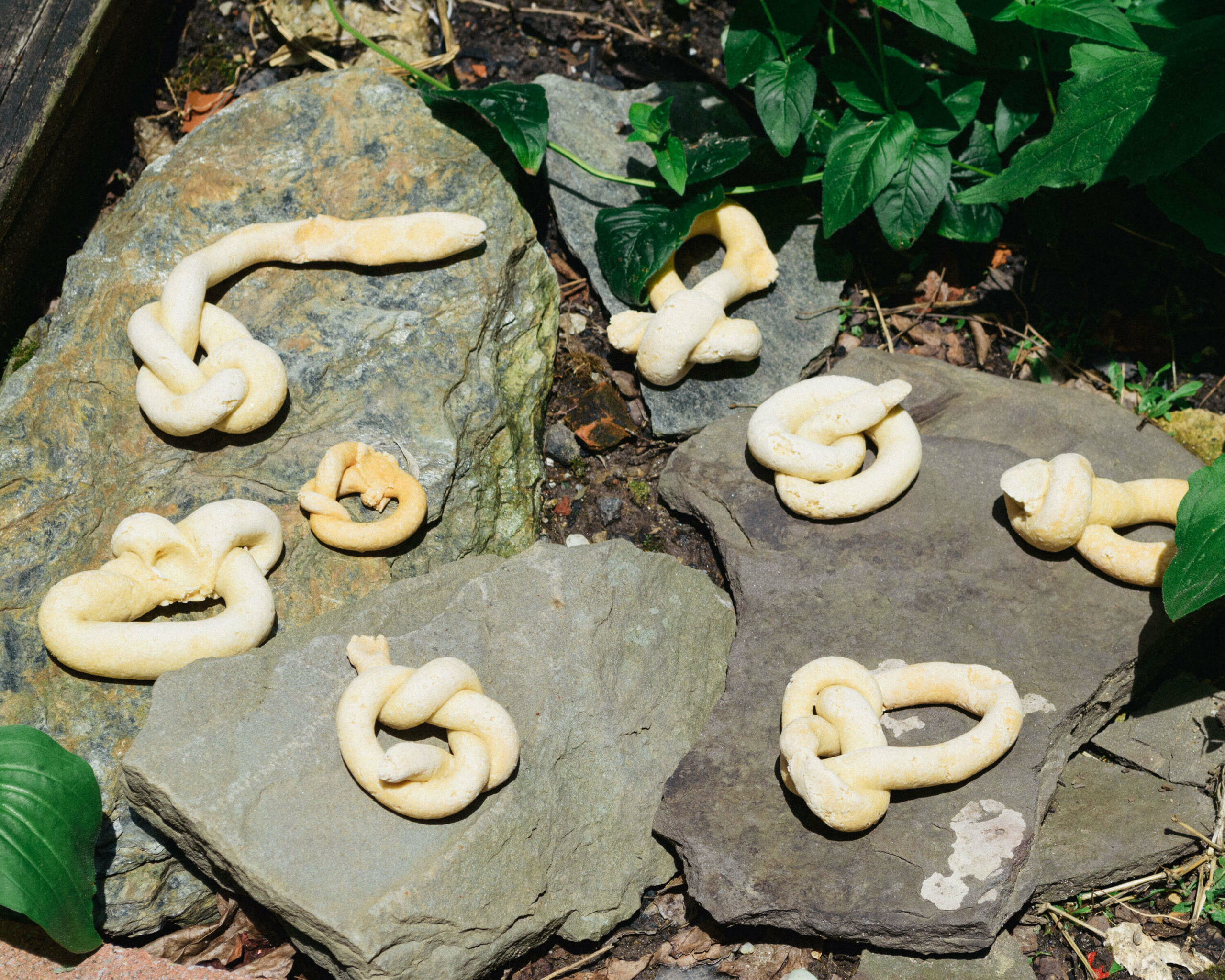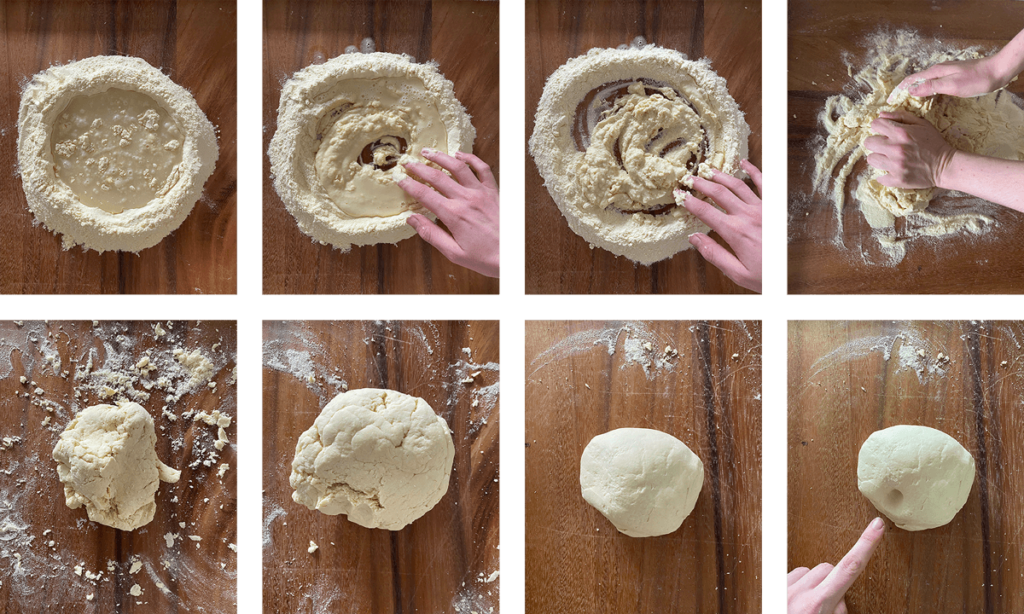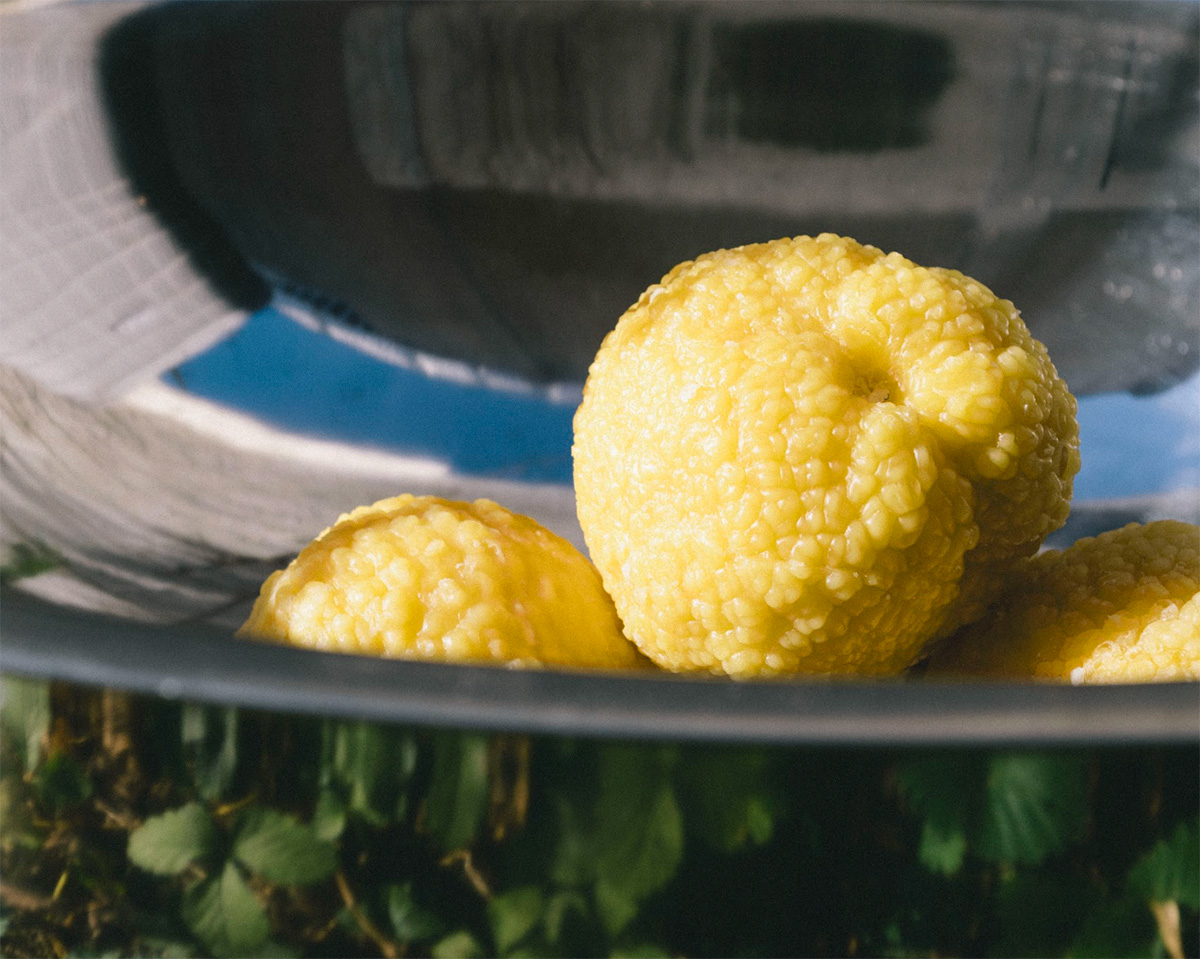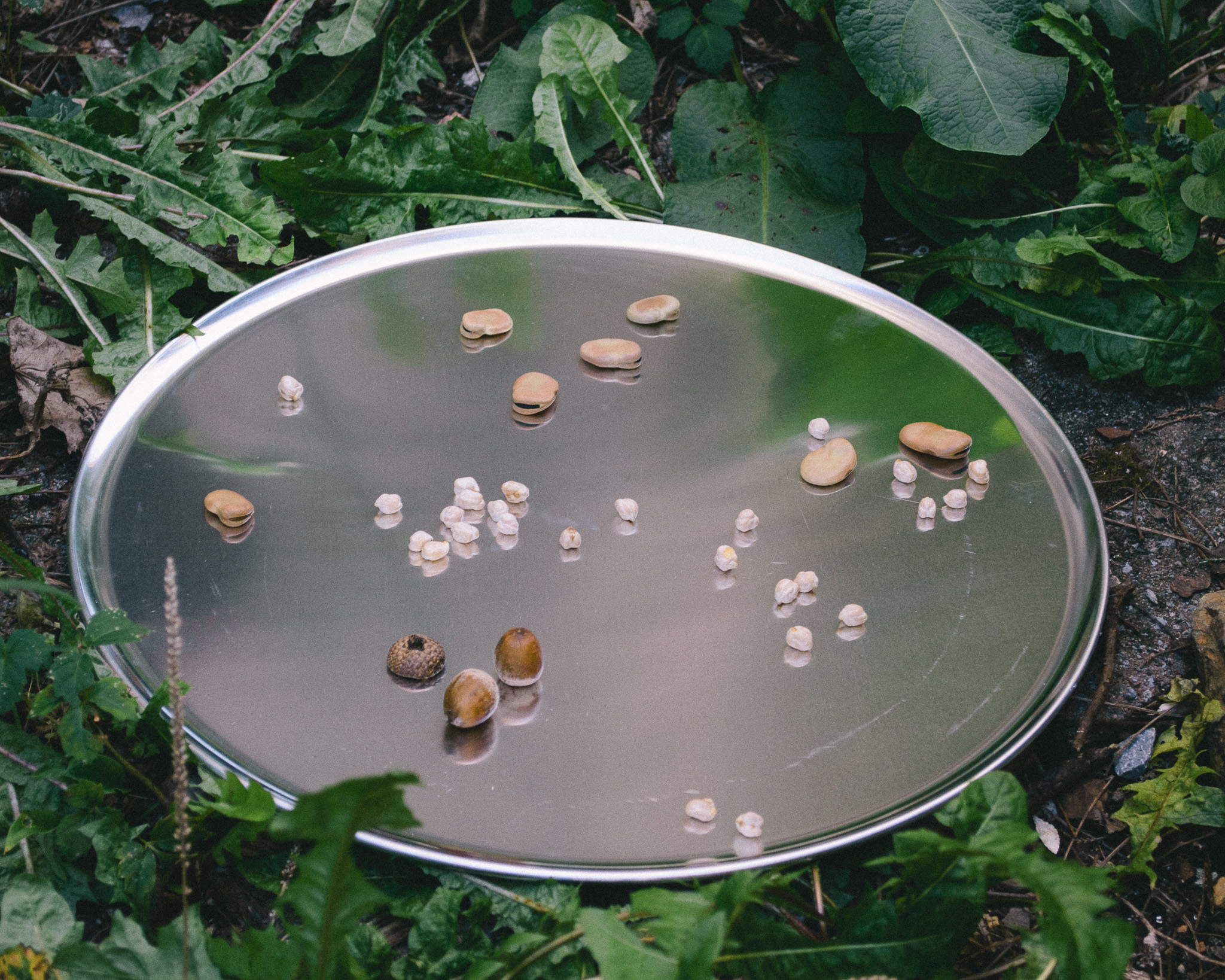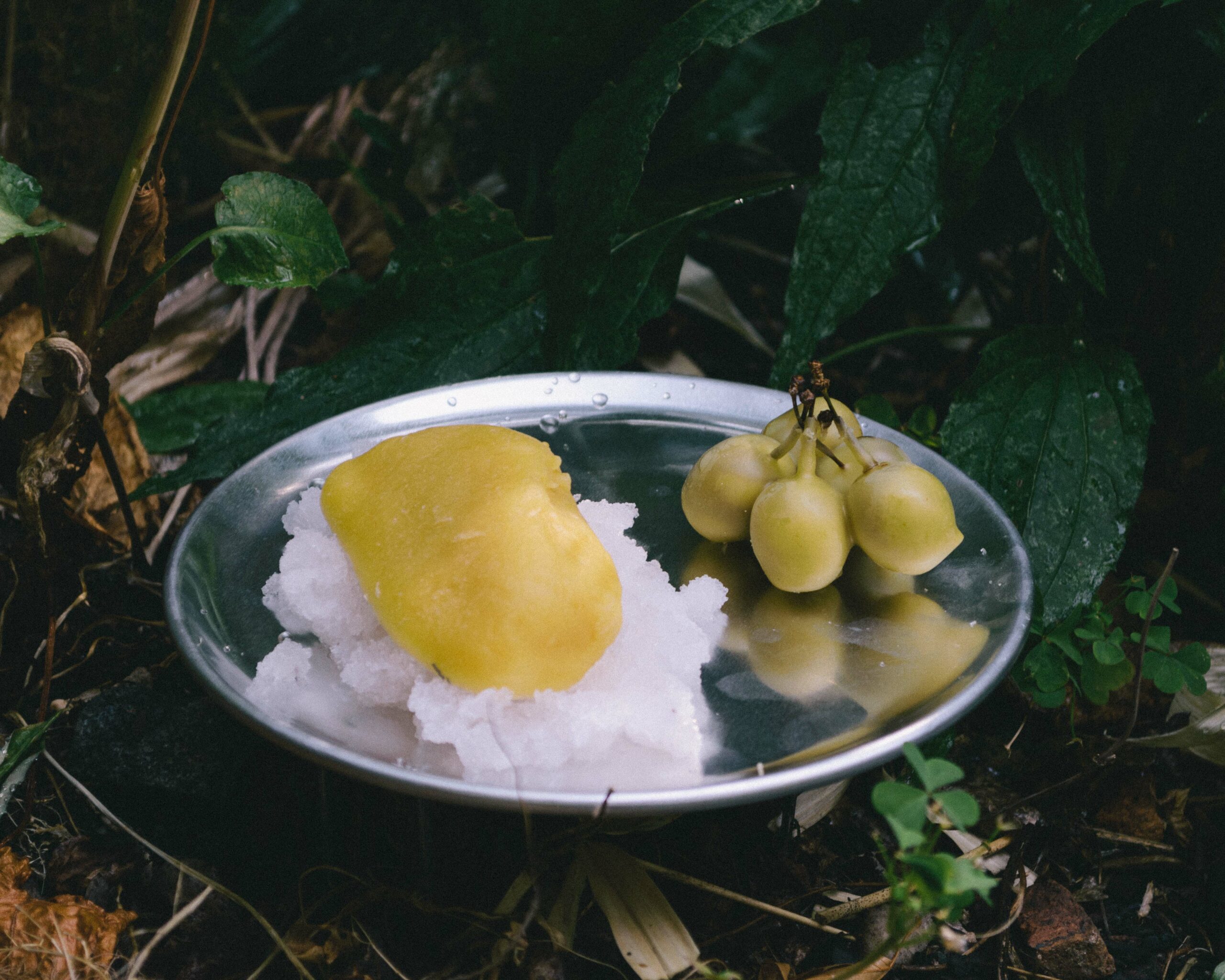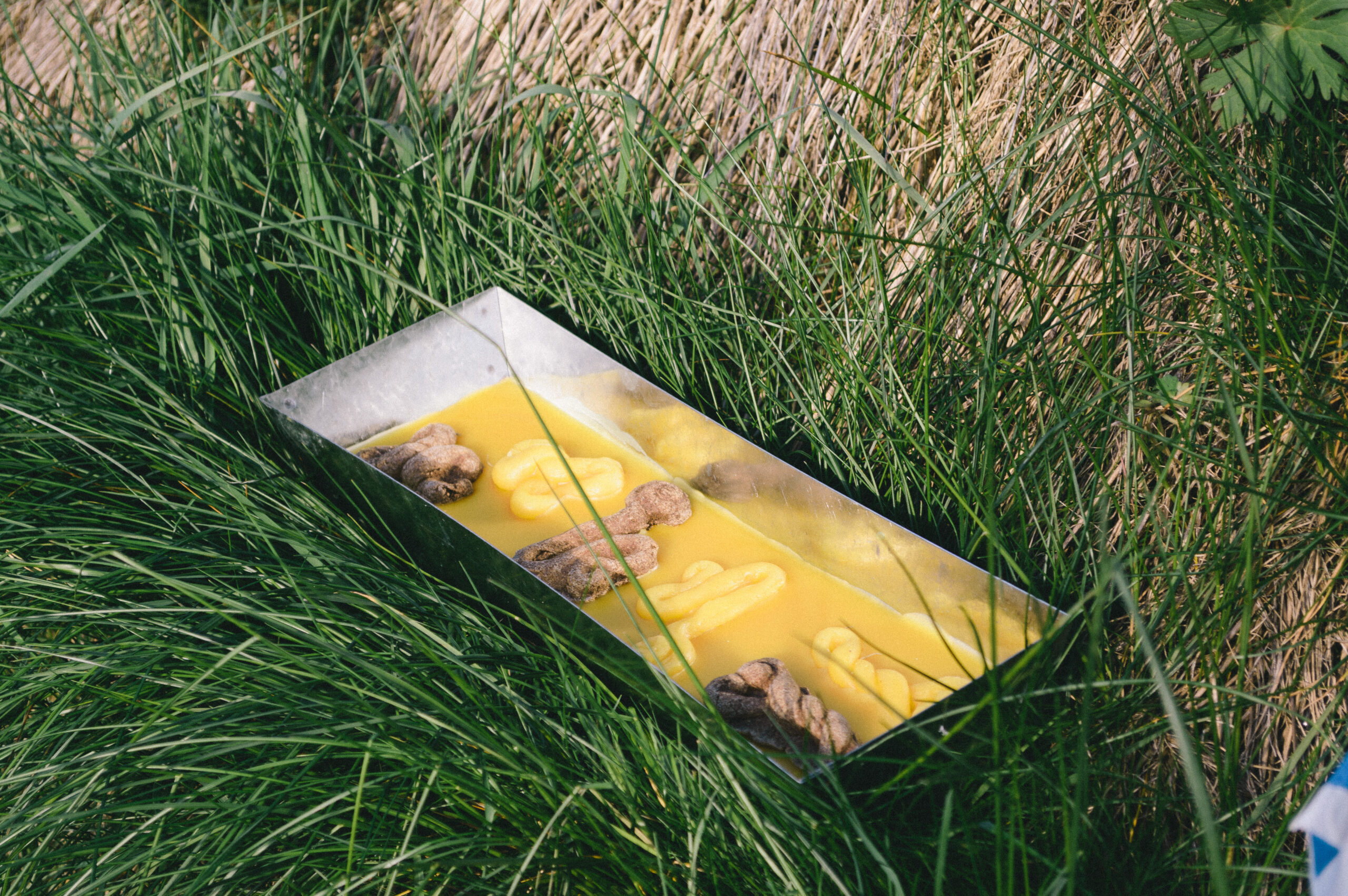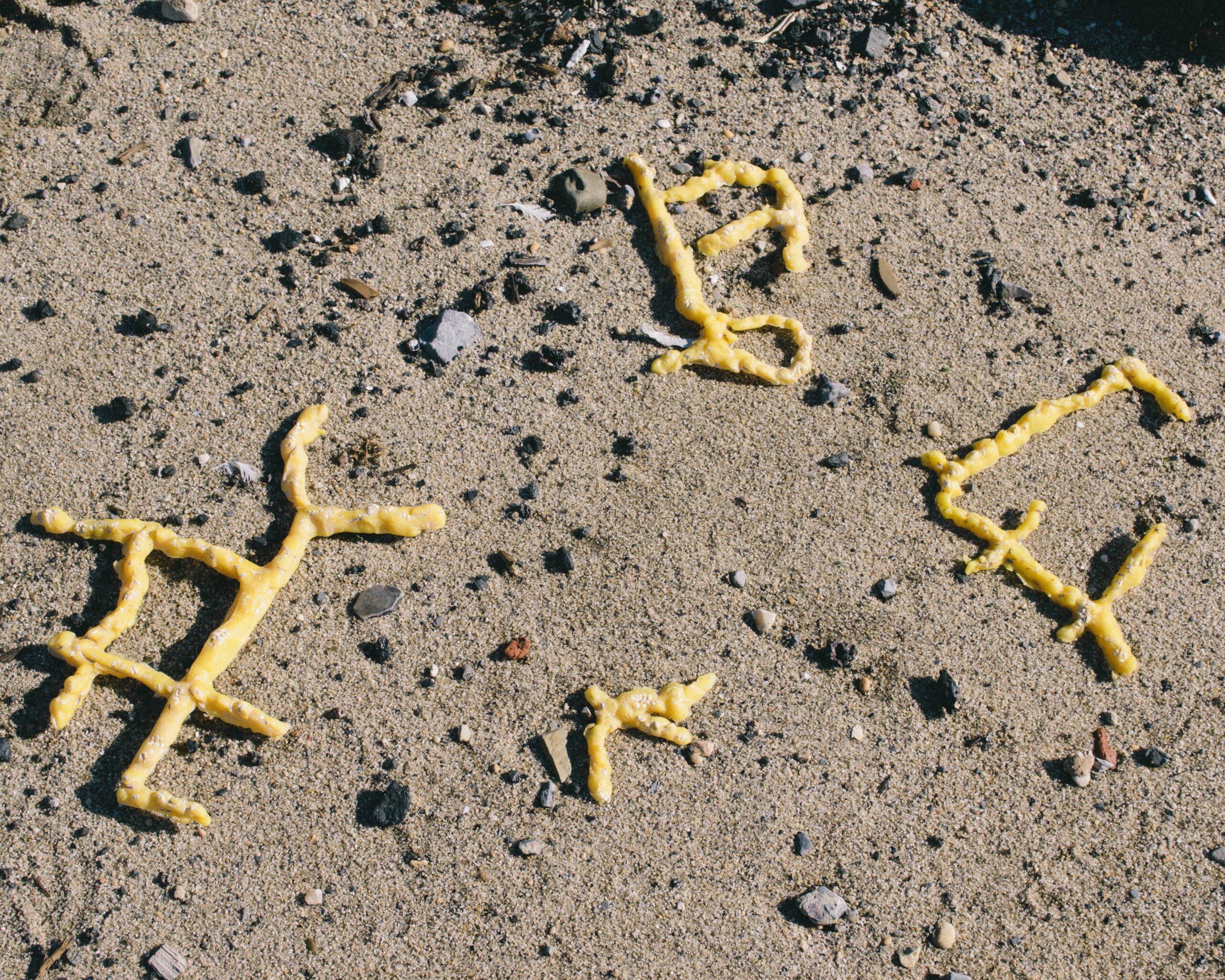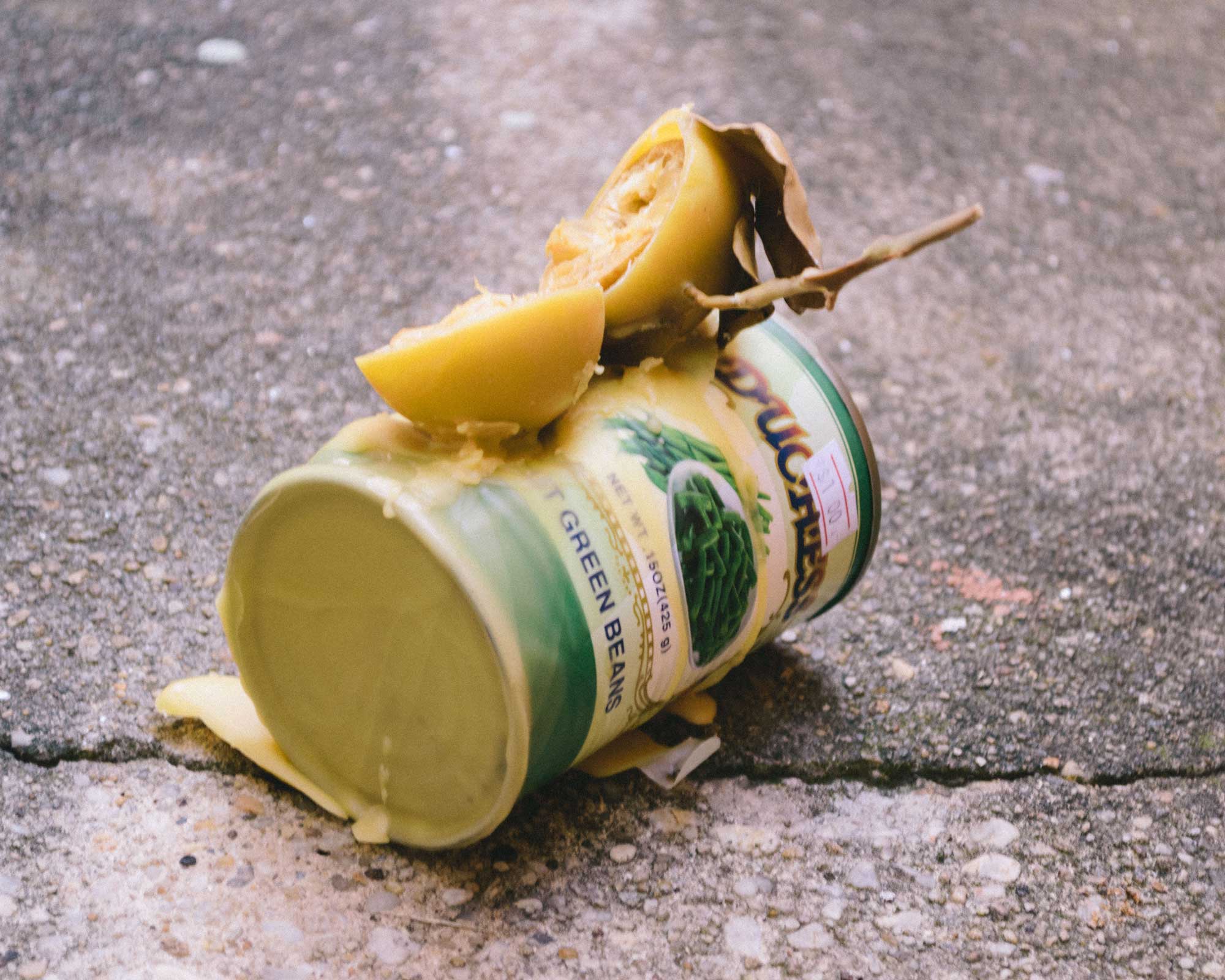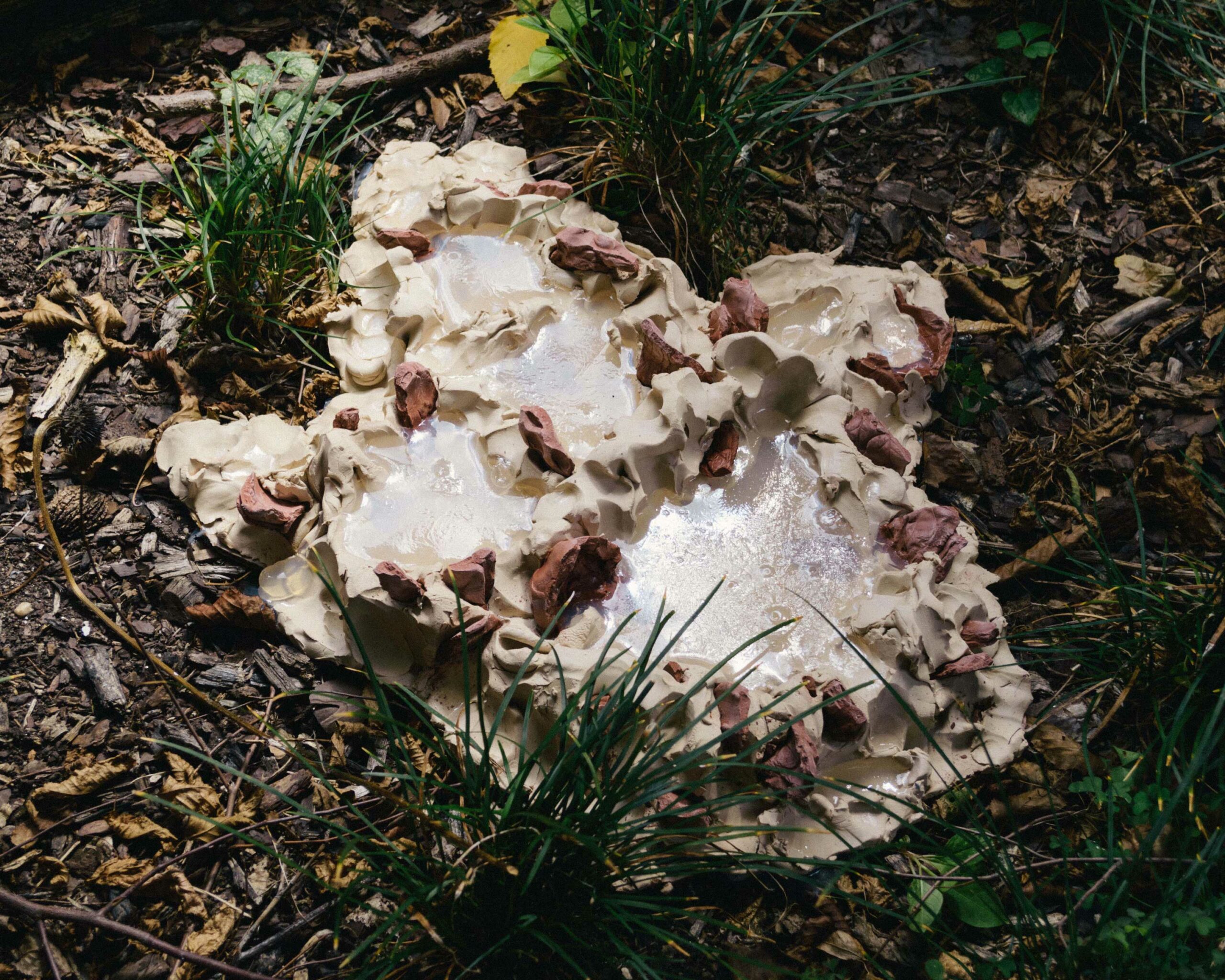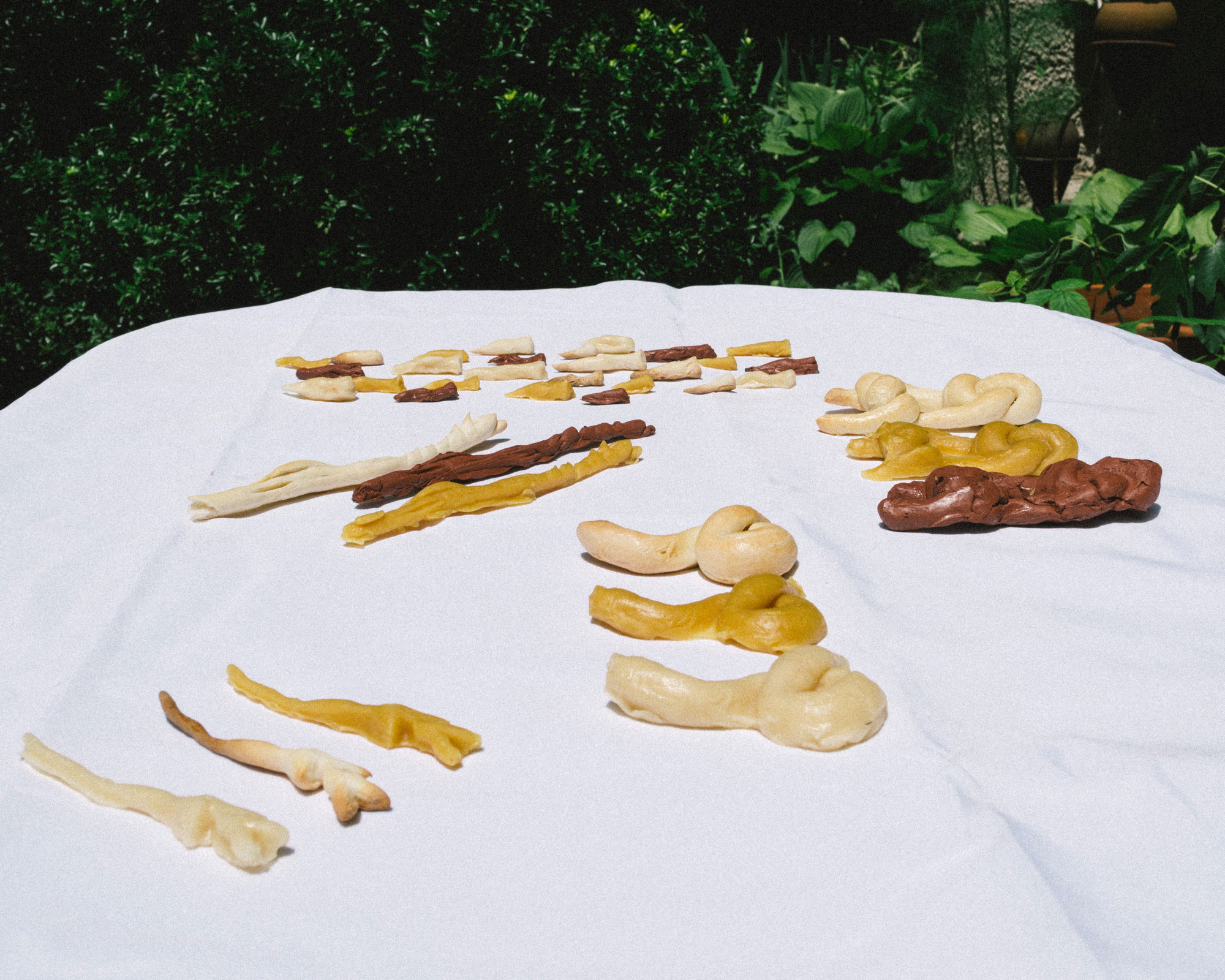Convivial Cosmogonies is a series that examines culinary labor practices and their material origins.
The origin of pasta is, like that of bread, an inevitable outcome of the search for ways to process and make use of the products of agriculture. “Pasta” itself translates to “paste” or “dough”, or even more abstractly as “mixture”. The specifics of the mixture vary quite widely, though it is usually wheat-based and hydrated with water and sometimes fat. There is, however, a deep history of non-wheat or alternative-wheat pasta including chestnut flour, buckwheat, and even flour milled from burnt wheat berries after a controlled fire as part of a larger land management system. Companion ingredients for pasta, which come in the form of sauces or condimenti, include similar outcomes of agriculture (farmed vegetables, olive oil, butter, and so on). In a home setting, the dish can also incorporate foraged or home-grown elements which snuggle up with the often highly processed flour to create a tidy little encapsulation of the various relationships and ecologies at play.
In Italy specifically, pasta is closely tied to class, its humble origins in dissonance with its ever-presence on menus at global Michelin-starred restaurants. It is, like many traditional food methods, a food and technique produced by and for laborers (waged and unwaged). The effort of illuminating labor implicated in food systems is useful within the broader project of combatting effects of a global capitalist system with specific aim to alienate us from our own labor (both wage labor and reproductive labor). Understanding food as the outcome of complex and interconnected labor systems allows us to both elevate the struggles embedded in the production of food and to de-fetishize the product itself. That is not to say de-fetishizing causes us to lose the sensuous, aesthetic, and emotional qualities of food and cuisine, but rather that we incorporate them into our consideration of the material realities and influence of cuisine as both nourishment and as foundational to culture.
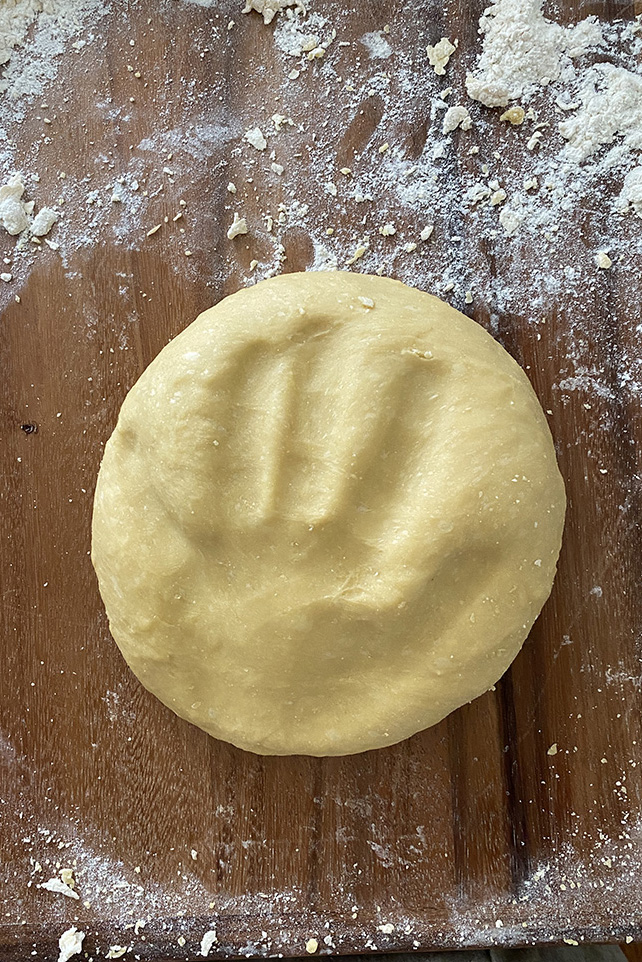
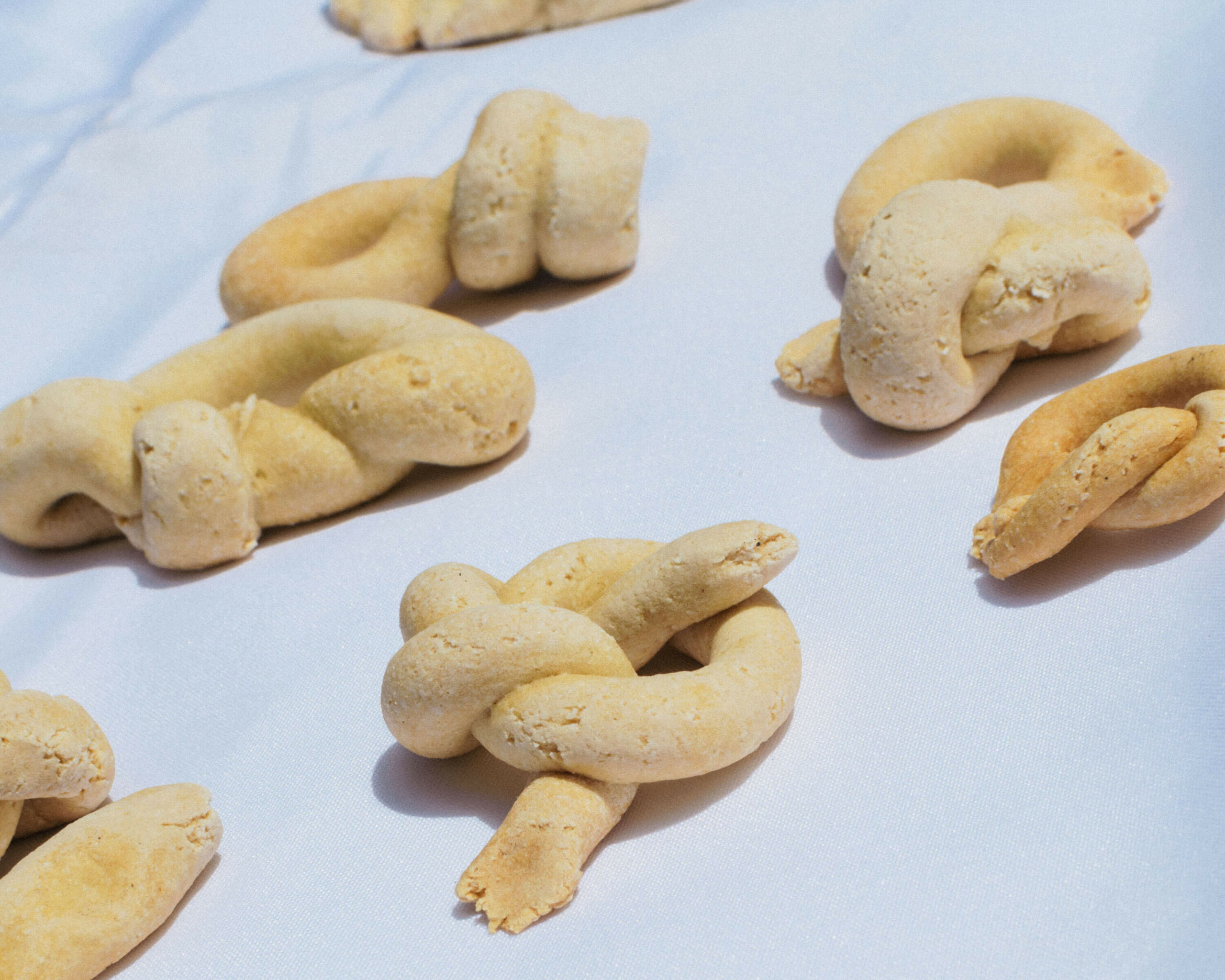
Traditions of life-making and care are particularly apparent within cuisine where, as with many crafts, the practicalities of reproduction are accompanied by a less quantifiable but equally fundamental (re)production which accounts for knowledge transfer, expression, myth, and collective material culture.
The parenthetical form of (re)production serves to emphasize the productive aspects of iteration and collaboration within reproduction and to situate it as a truly productive aspect of our material lives that is not so simply contained in the domestic sphere. As described by Silvia Federici, “An important aspect of it [reproduction] is the reproduction of our collective memory and the cultural symbols that give meaning to our life and nourish our struggles.”1 There is a relationship between the often discussed marginalization of domestic labor and that of the equally slippery aspects of (re)production with respect to material and craft traditions. (Re)productive labor’s ineffable qualities have sheltered it from valuation and appropriation.
- 1. Re-enchanting the World: Feminism and the Politics of the Commons, Silvia Federici.
Reproductive labor, that is, labor to reproduce individuals and labor power, remains one of the last holdouts of a pre-capitalist commons. Reproductive labor in its most common definition includes biological reproduction, child and elder care, food preparation, cleaning and home maintenance, and so on. From within capitalism’s perspective this labor is considered a given – a natural or raw resource that serves as an invisible or obscured foundation on top of which capitalist modes of extraction of value sits. One should question whether this marginal labor is marginal by design or too slippery to quantify and appropriate in the first place: is it beneficial to or impossible for the system to exclude it from more direct wage labor dynamics? In a system that demands everything be assigned value, there is an essential distinction between reproduction as simple propagation of labor power, and (re)production as a practice of passing along and iterating upon (ie (re)producing) traditions that nourish us. In this sense, (re)productive labor embodies a fundamental metabolization and transformation of shared nature to shared culture.
By identifying and commodifying raw or “natural” resources, capitalism creates and maintains a labor structure that isolates workers from any evidence of labor existing outside of a capitalist system. Through social reproduction, this exploitation of labor is represented as inevitable, historical, and even natural. Underpinning this system is the alienation of the laborer from the labor itself. Alienation in this sense means that one does not control the output of one’s labor, rather one exchanges labor, the seasonal worker who harvests tomatoes for example does not receive a proportional cut of tomato sales, instead they exchange their labor for wages. This is most easily executed in waged labor while unwaged forms of labor inhabit a space more nebulous to quantify. In this way alienation can also be interrogated as it relates to outputs of a landscape, animal labor, or domestic labor where it represents a “metabolic rift”, as Marx puts it, between us and nature. Food and its material expression is a tangible output of such labor and the way cuisine is presented in spaces where capitalism has all but dominated lays out quite plainly the relationship to reproductive labor that capitalism prefers. It is a relationship where alienation and dispossession dominate and our relationship to our (individual and collective) bodies and the landscape is abstracted in service of converting this alienated labor into consumption.
The Field, the Kitchen, the Garden, and the Table have the potential to act as sites for combatting alienation, dispossession, and exploitation.
Cuisine and food are not inherently good or bad (in a moral sense), but rather they present us with moral choices on a range of scales. Food is the outcome of a mesh of systems and relations that metabolize and transform resources and the landscape. While food production and all it entails (agriculture, land usage, water access, global trade, etc) predates and is not exclusive to capitalism or political states, the result is the literal fuel that powers and upholds such systems and institutions. Reproduction is treated similarly as a so-called “natural” resource from which value can be extracted; efficiently and knowingly obfuscating the labor that precedes its commodification. Intrinsic to (re)productive labor, therefore, is the potential to serve as a tool to combat alienation and dispossession. In the face of alienation, traditions and practices of conviviality become viable alternatives.
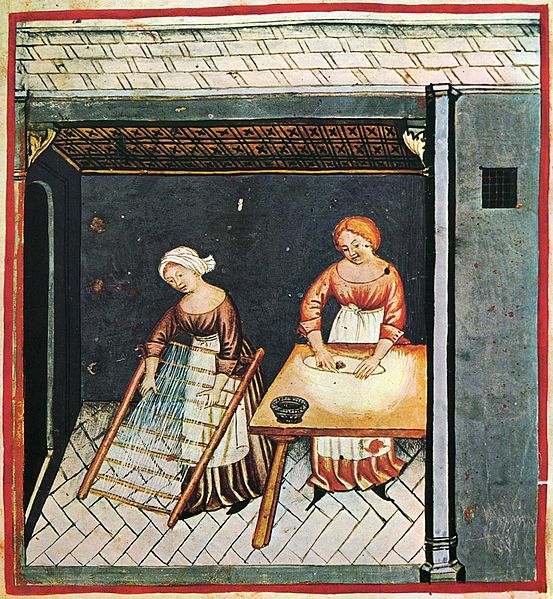
“Conviviality” derives from the latin “convivium” ‘a feast’, with con meaning ‘with’ and vivere meaning ‘to live’. In effect, it offers the table as a relational site, relations between humans and the outputs of thousands of years of mutual exchange, domestication, and taming that cuisine represents. A distinction, however, should be drawn between “cuisine” and “food”, the former representing a practice and a culture while the latter the object itself. “Cucina” in Italian translates to the third person conjugation of the verb cucinare meaning to cook (e.g. she cooks), a noun that refers to the kitchen, and to cuisine. Collapsing the action, location, and its output in this way is efficient and poetic but in the absence of that word in English, “cuisine” will do with the support of “food” and “cooking” and “kitchen”. Conviviality further collapses the broadly culinary to include agriculture, cultivation, stewardship, and transformation required to process a whole range of objects and organisms into food.
Conviviality is in its own right a subset of (re)productive labor that melds the less materially concrete (i.e. exploitable) aspects of pleasure, sensuality, metabolism, and rot. As Leopoldina Fortunati frames it in The Arcane of Reproduction, “Reproduction work is not only concrete work, individually necessary and complex, it is also abstract human labor, socially necessary, and simple.” Conviviality accounts for exchanges outside of a system that requires value be assigned and profits be maximized, which is not to say that conviviality is altogether fair or happy (it can also be quite cruel), but rather that it represents relations that are potentially threatening to a worldview that identifies reproduction as simply a means through which to reproduce an expendable workforce to expand and contract as the market desires. The Field, the Kitchen, the Garden, and the Table, therefore, have the potential to act as sites for combatting alienation, dispossession, and exploitation. Mariarosa Dalla Costa described her own moment of opening up her feminist materialist analysis to the natural world outside the confines of the home: “I went on migrating from room to room in the house of reproduction. Then finally I found the door that opened into the flower and vegetable garden: I realized the importance of the question of the land.”2
- 2. The Door to the Garden, from Women and the Subversion of the Community, Mariarosa Dalla Costa.
Implicated by both reproductive and (re)productive labor, specific food traditions can help sort through some of the more complicated aspects of this material analysis. Italian pasta traditions, for instance, are concise intersections of condensed nutrition, scalability, and portability but also as a tool to express one’s formal sensibilities, immediate ecology, material reality, and personal tastes. Pasta (or truly any traditional food tradition) is a necessarily complicated tangle of convivial relations. This tangle can also represent the unwieldy history of humanity’s impulse to transform itself and the world around it. Massimo Montanari names this impulse invention: “Invention is not born only from luxury and power but also from necessity and from poverty. The fascination of culinary history is basically this: to discover how mankind, with effort and imagination, has sought to transform the pangs of hunger and the anguish of nutritional privation into potential occasions for pleasure.” Pasta becomes a microcosm for the ecologies of labor in specific regions or within specific cultural milieu as one cannot fully reduce cuisine to its locale as much as we might like to believe. Class divisions shaped by labor dominate and define cuisine as they represent the particular metabolization of the landscape: “As individuals express their life, so they are. What they are, therefore, coincides with their production, both with what they produce and with how they produce. The nature of individuals thus depends on the material conditions determining their production.”3
- 3. The German Ideology, Karl Marx.
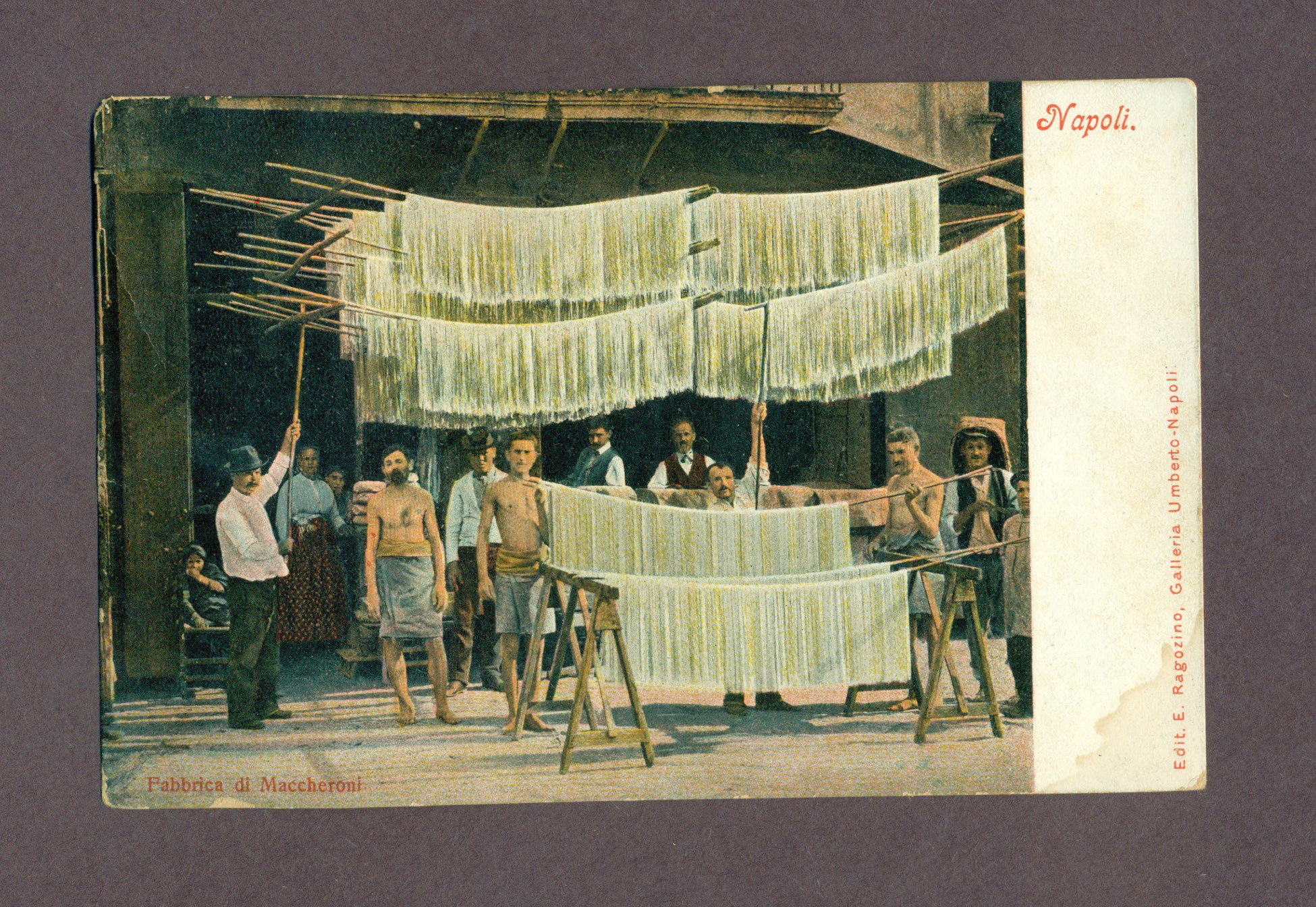
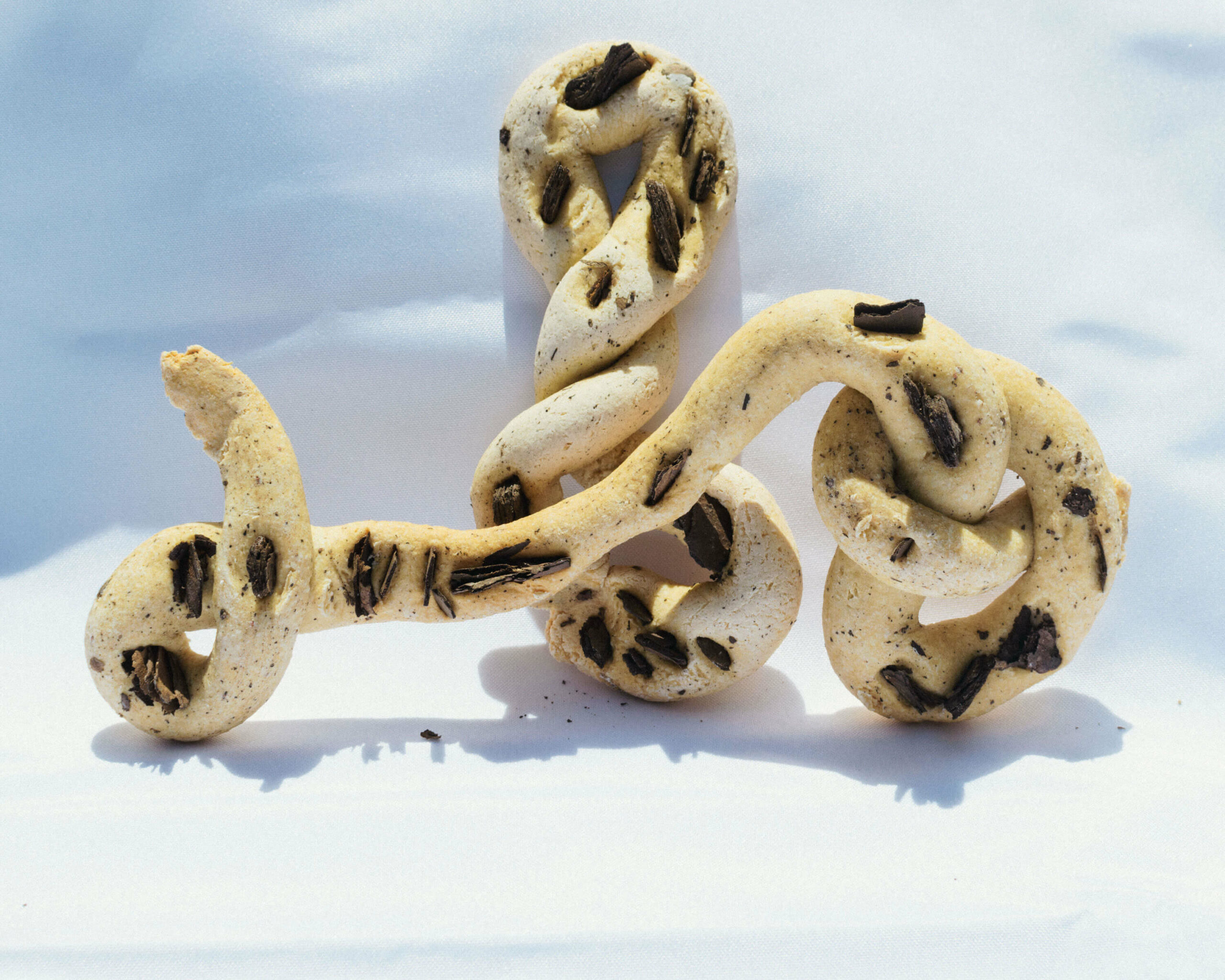
Pasta is, above all, a working-class food. It is quite inexpensive, or rather, efficient, to produce in the sense that its nutritional output or the value extracted from the sale of it is advantageously proportional to the labor and is greater than the sum of its parts. Grains are among the most valuable agricultural products and represent one of the most formative human technological developments. Wheat has been cultivated for more than 10,000 years, beginning in the Fertile Crescent through trait selection. The traits selected for improved wheat as a food source and also resulted in the loss of the plant’s natural seed dispersal mechanisms, replacing it with human dispersal in a form of mutual domestication. Cultivation of wild grasses, irrigation, and processing of harvests are crucial steps to arrive at a plate of pasta as we know it. These connections still exist though they have been (deliberately) obscured. We still eat the milled seeds of the descendents of wild grasses: grown, harvested, and processed in dialogue with (and often at the expense of) the landscapes from which those materials are extracted. Without flour there is no pasta. Without grain there is no flour. Without agriculture there is no grain. Agriculture and inter-species exchange go hand in hand in trade, collaboration, influence, theft, empire, and contamination. We’re essentially talking about cosmogonies of ingredients, and the labor of plants and nonhumans is explicitly present here.
In the absence of complete documentation of methods or recipes, we can turn to tools or pasta forms to better understand the material conditions of those making pasta and in doing so understand the ways shapes are developed. Tools like stalks of wheat and metal spokes were used to create macaroni-like shapes with holes going through them in the absence of more industrial extruders. Riding spurs became the formal jumping off point for a scalloped pasta cutter or “rotella tagliapasta”. A guitar is the namesake for the tool developed for pasta “chitarra”, an Abruzzan version of fettuccine cut on taut wires strung like those on a guitar.
Pasta is designed. Sometimes formally by a designer or chef or corporation, but more often than not its design is vernacular and springs from the gestures and tools of the people who make it. People who historically were making it to survive either by eating it or selling it managed to find, within survival, space for creativity and humor and poetry. The forms themselves (much like those found in architecture, ceramics, or any other craft) have become monuments to traditions backed by a history of myths and clouded origins. Ultimately, there is little use in pinpointing where function and myth begin and end, as they are dependent on one another.
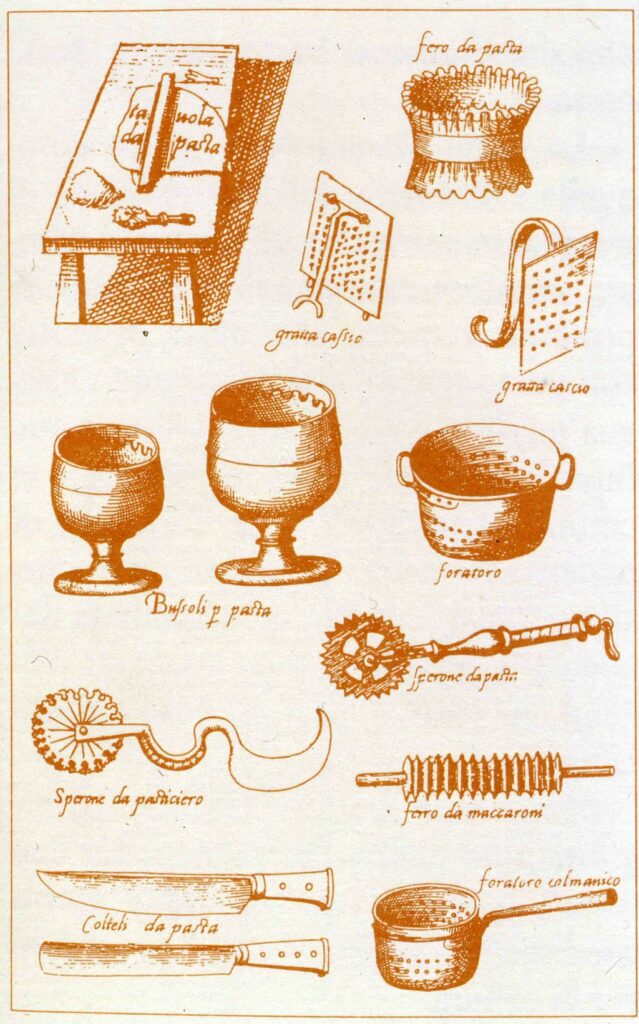
Industrial pasta production is not “industrial” in the sense that it has no relation to “traditional” pasta-making methods – a sort of relationship that is a bit counterintuitive if one is coming from an American experience of industrial food. Rather, industrially produced pasta is made at a range of scales from local mills that extrude their own shapes to a megacorporation like Barilla. In both cases, the forms of the pasta itself look to traditional shapes and local foodways to ensure they are welcomed into the home while also elaborating on the technology available to them due to the nature and scale of the product. In return, the average Italian household has adapted styles of preparation and accompaniments that specifically suit the forms and textures of an industrial dried pasta product. Pasta traditions are not static and are often more contemporary than they appear to be. Shapes and processes are constantly being adapted to compensate for the aging bodies of the stewards of the tradition, ingredient accessibility, information transfer technology (ex: YouTube, TikTok, video chatting with a relative), and cultural shifts in taste due to globalization. These changes do not, however, necessarily threaten the tradition itself. As Walter Benjamin puts it “The uniqueness of a work of art is inseparable from its being embedded in the fabric of tradition. This tradition itself is thoroughly alive and extremely changeable.”4
- 4. The Work of Art in the Age of Mechanical Reproduction, Walter Benjamin.
Practicing traditional food knowledge can serve to ground us in or reintroduce us to the tangle of relations in which we participate. Cooking, gardening, and eating together all represent what Kelli Donati calls “everyday embodied practices” in her work, The Convivial Table. In the case of pasta, or indeed, any traditional food, making it at home need not be a technical undertaking like that of the professional chef or the Silicon Valley hobbyist who approaches sourdough bread as a series of technical hurdles and systems to perfect, but rather it can be an imperfect practice of (re)production of life as well as a collective tradition and mythology in its own right.
⌘ EGGLESS PASTA ⌘
pasta senza uova
For Pasta:
- 400 g semola di grano duro rimacinata*
- 200 ml lukewarm water
- Pinch of salt
For Pesto:
- 3 parts tender green (herbs, arugula, or even bitter greens will work)
- 1 part grated cheese (this can be aged or a young cheese)
- 1 part oil (any oil but as high quality as you can manage)
- Garlic (or equivalent allium) to taste
- Salt to taste
*3/4 of a cup of this flour is ROUGHLY 100g, use a scale if you can. Semola di grano duro rimacinata (finely milled durum wheat flour) can be found online and in some specialty stores
Pasta
For shapes like orecchiette, cavatelli, and as the starting point for industrial dried pasta
Serves 4-6 people
Start by making a wide and shallow well, fountain, or fontana of the flour. In the hole of the well pour your water and salt, mixing so the salt dissolves in the water. Then, using a fork or your fingers, stir around the perimeter of the water to incorporate the flour bit by bit. Once you have a thick sludge in the middle incorporate the rest of the flour and knead thoroughly for 15-30 minutes until it is elastic (the texture of your earlobe), smooth but not tacky, and lighter in color, almost a little aerated. You can’t rush it. If you find your dough to be too dry or crumbly, wet your hands occasionally as you knead to incorporate more water. If it is too wet or sticky, sprinkle more flour on your surface and continue to knead the flour into your dough.
Then let it rest at room temperature for at least 30 minutes in plastic wrap or under a bowl. This resting period will allow the gluten to relax and for the flour to fully hydrate.
Shaping of this dough is easy and usually done by hand or aided by a utensil like a butter knife or skewer. If you have a pasta extruder this dough is ideal. It is a great dough for a shape with more dimension that has nooks and crannies to hold sauce. It can be almost anything as long as it is not so oversized/thick (keep it under a centimeter) that when it is boiled the exterior will cook faster than the interior. Keep the pasta on a floured tray to keep from sticking (coarse semolina is best but whatever flour you’re using is fine). And freeze extra or scraps for future use! Boil in water salted like the ocean for 2-5 minutes depending on the shape and size. Once they float, taste for doneness and fish them out. Toss with your preferred condimento or see below.
Pesto
Pesto, deriving from the Italian verb “pestare” meaning “to pound”, is more method than recipe. Use this as a guide or invitation to seek out what is available to you at the market and local store or in your own pantry and garden.
Finely chop or pound the greens, nuts or seeds, and garlic by hand or in a food processor. Then incorporate the oil until the mixture is loosened but oil does not dominate the greens. Finish by stirring in the cheese and salt to taste.
